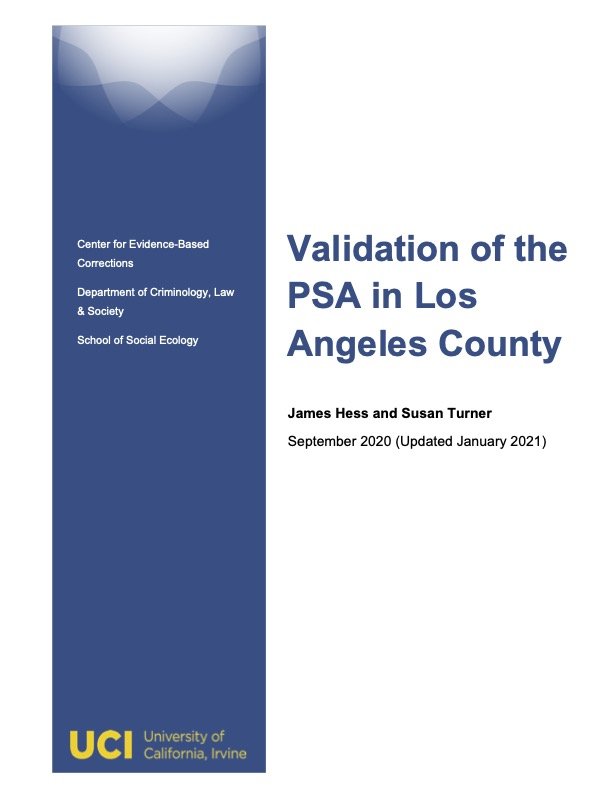By James Hess and Susan Turner
Jurisdictions across the country have joined a movement to rethink how individuals are handled at the pretrial stage of case processing. Although alternatives to cash bail systems have been around since the 1960s, 1 renewed interest has focused on the use of risk assessment algorithms to help determine which pretrial individuals might be released safely into the community. These types of tools hold promise as a means to move away from “debtor prisons” for individuals who do not have the financial resources to pay for their release. However, the field is still in the relatively early stage of testing these tools for predictive ability, potential racial bias in administration, as well as whether their use actually reduces incarceration.2 California has recently entered the pretrial risk assessment arena. Senate Bill 10 was passed in 2018 to change from a cash-based pretrial system to a risk-based release and detention system; although it is on hold until November 2020 when California voters determine its fate. 3 However, legislation passed as part of the 2019 Budget Act created a pilot program to test the use of various risk assessment tools in a number of counties across California. This report presents findings from the Los Angeles pilot effort under the Act to validate the Public Safety Assessment (PSA). The PSA is a risk assessment instrument developed by the Laura and John Arnold Foundation to inform pretrial judicial decisions on whether to release or detain a defendant. The tool predicts three outcomes after pretrial release: Failure to Appear (FTA); New Criminal Activity (NCA, arrest on any misdemeanor or felony charge); and New Violent Criminal Activity (NVCA, arrest on a violent misdemeanor or felony charge). The tool’s nine risk factors include prior convictions, incarceration, and failures to appear, violent offenses, pending cases at the time of arrest and age. Risk factor counts are weighted by an integer multiplier and summed to create a risk score. Several sets of adjacent scores are collapsed together into one score to produce a final 6-point risk scale for each of the outcomes.
Irvine, CA: University of California Irvine, Center for Evidence-Based Corrections, 2021. 103p



